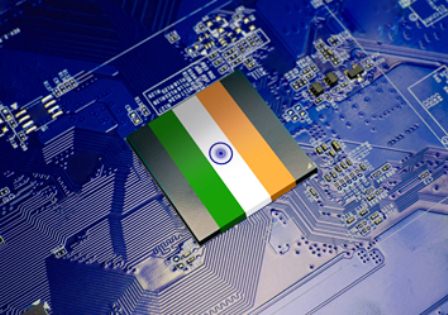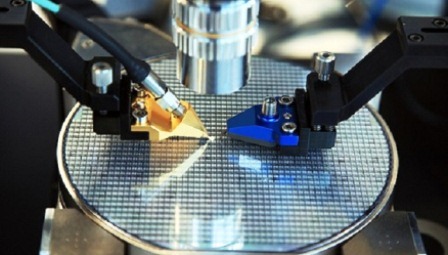India has made significant strides in the semiconductor sector, positioning itself as a major player in the global semiconductor market. The current semiconductor industry in India is indeed turning heads of global semiconductor players.

The current semiconductor industry in India offers a conducive environment for semiconductor manufacturing, with a focus on research and development, design, and innovation. The government has implemented various initiatives to attract investments and promote indigenous semiconductor manufacturing.
One of the key factors driving the current semiconductor industry in India is the increasing demand for electronics and digital devices. From smartphones to smart appliances, the demand for semiconductors is skyrocketing, and India is well-positioned to cater to this demand.
The current semiconductor industry in India also boasts a talented pool of engineers and scientists who are actively contributing to the industry’s growth. Many Indian companies are involved in semiconductor design, testing, and manufacturing, while several multinational companies have set up their R&D centers in India.
Moreover, the government has launched initiatives like “Make in India” and “Digital India” to promote domestic manufacturing and digitalization, which further support the growth of the current semiconductor industry in India.
In recent years, India has witnessed the establishment of semiconductor fabrication facilities, also known as fabs, which are crucial for the production of advanced semiconductors. This has boosted India’s potential to become a global hub for semiconductor manufacturing.
As the semiconductor industry continues to evolve, India is expected to play a significant role in driving innovation, research, and manufacturing.
Semiconductor Manufacturing In India

Semiconductor manufacturing in India has been gaining momentum in recent years. The government has implemented various initiatives to encourage domestic semiconductor production and reduce dependence on imports.
India has witnessed the establishment of semiconductor fabrication facilities, also known as fabs, which are crucial for the production of advanced semiconductors. These fabs enable the manufacturing of integrated circuits and microchips, which are the building blocks of various electronic devices.
Additionally, the government has launched the Electronics Manufacturing Clusters (EMC) scheme to provide infrastructure and support for semiconductor manufacturing units. This scheme aims to create a conducive environment for semiconductor companies to set up their operations in India.
To further bolster the current semiconductor industry in India, the government has also introduced production-linked incentive schemes for the electronics and semiconductor industry. These schemes offer financial incentives to companies that manufacture semiconductors in India.
Furthermore, the current semiconductor industry in India is actively promoting research and development in the semiconductor sector. Several research organizations and academic institutions are working on cutting-edge technologies, such as nanotechnology and semiconductor materials, to enhance the country’s semiconductor capabilities.
Collaborations between Indian and international semiconductor companies are also on the rise. This allows for knowledge sharing, technology transfer, and access to global markets, thereby accelerating the growth of semiconductor manufacturing in India.
It’s worth noting that while India is making significant strides in semiconductor manufacturing, it is still in the early stages of becoming a global semiconductor manufacturing hub. However, with the right support, infrastructure, and investments, India has the potential to become a major player in the semiconductor industry.
Electronic Component Policy in India
India has been actively working on its Electronic Component Policy to encourage domestic manufacturing and reduce dependency on imports. The government recognizes the importance of electronic components in various industries and aims to boost their production within the country.
Under the National Policy on Electronics (NPE), the government has set ambitious targets to increase domestic value addition in electronic products, including electronic components. The policy aims to achieve a turnover of $400 billion by 2025, with a focus on promoting domestic manufacturing, innovation, and research and development.
To facilitate the growth of electronic component manufacturing, the government has implemented several initiatives. These include the Production-Linked Incentive (PLI) scheme, which offers financial incentives to encourage the production of electronic components in India. The PLI scheme provides support for manufacturing various components like semiconductors, display panels, and more.
Additionally, the government has launched the Electronics Manufacturing Clusters (EMC) scheme, which provides infrastructure and common facilities for electronic component manufacturers. This scheme aims to create a favorable ecosystem for component manufacturing by offering plug-and-play facilities, testing laboratories, and logistics support.
To promote research and development in electronic components, the government has established Centers of Excellence (CoEs) and Innovation Labs. These centers focus on developing cutting-edge technologies, fostering collaboration between industry and academia, and accelerating innovation in electronic components.
Furthermore, the government has taken steps to simplify regulations and improve ease of doing business in the electronic component sector. This includes streamlining customs procedures, reducing import duties on certain components, and providing tax incentives for domestic manufacturing.
The Electronic Component Policy in India is geared towards promoting self-reliance, boosting domestic manufacturing, and encouraging innovation in the electronic component sector. With these initiatives in place, India aims to become a global hub for electronic component production.
Future of Semiconductors in India
India has recognized the strategic importance of semiconductors and is taking significant steps to position itself as a global player in this industry. Several factors contribute to the bright future of semiconductors in India:
- Domestic Manufacturing: The Indian government has implemented initiatives like “Make in India” and production-linked incentive (PLI) schemes to encourage domestic semiconductor manufacturing. These efforts aim to reduce reliance on imports and promote indigenous production.
- Growing Market Demand: The demand for semiconductors is rapidly increasing in India due to a rising middle class, increased smartphone penetration, the Internet of Things (IoT), and digital transformation across various sectors. This demand creates opportunities for semiconductor manufacturers and suppliers.
- Research and Development: India has a strong focus on research and development in the semiconductor industry. Institutions and organizations are actively working on cutting-edge technologies, such as nanotechnology, artificial intelligence, and advanced packaging techniques. This emphasis on R&D strengthens India’s capabilities in semiconductor innovation and design.
- Skilled Workforce: India possesses a large pool of skilled engineers and scientists, making it an attractive destination for semiconductor companies. The availability of talent, combined with the growing emphasis on technical education and skill development, ensures a robust workforce for the semiconductor industry.
- Government Support: The Indian government is actively providing support through policies, incentives, and infrastructure development. This includes setting up semiconductor fabrication facilities (fabs), establishing electronics manufacturing clusters, and offering financial incentives to attract investment in the semiconductor sector.
- Collaborations and Partnerships: Indian semiconductor companies are increasingly collaborating with global players, fostering technology transfer, knowledge sharing, and market access. These partnerships contribute to the growth and competitiveness of the semiconductor industry in India.
The semiconductor industry in India is poised for significant growth and innovation. It is expected to play a crucial role in India’s digital transformation, manufacturing capabilities, and its position as a global player in the semiconductor market.
Global Semiconductor Trends
- Artificial Intelligence (AI) and Machine Learning (ML): AI and ML applications are driving the demand for advanced semiconductors. From data centers and cloud computing to autonomous vehicles and robotics, AI and ML require powerful chips with high-performance computing capabilities.
- Internet of Things (IoT): The proliferation of IoT devices is fueling the demand for semiconductors. Connected devices such as smart home appliances, wearables, industrial sensors, and smart cities rely on semiconductors for processing, connectivity, and energy efficiency.
- 5G Connectivity: The rollout of 5G networks is driving the need for semiconductors that can handle higher data speeds, low latency, and increased network capacity. This includes chips for 5G base stations, smartphones, IoT devices, and network infrastructure.
- Automotive Electronics: The automotive industry is increasingly reliant on semiconductors for advanced driver assistance systems (ADAS), infotainment systems, electric vehicle components, and autonomous driving technologies. The shift towards electric and autonomous vehicles is driving the demand for specialized semiconductor solutions.
- Edge Computing: Edge computing, where data processing occurs closer to the source rather than in the cloud, requires semiconductors with low power consumption and high processing capabilities. This trend is driven by the need for real-time data analysis, reduced latency, and enhanced privacy and security.
- Advanced Packaging: As semiconductor technology advances, there is a growing need for innovative packaging solutions. Advanced packaging techniques, such as 3D stacking, system-in-package (SiP), and heterogeneous integration, are becoming increasingly important for improving performance, power efficiency, and miniaturization.
- Sustainable and Energy-efficient Solutions: There is a growing focus on developing energy-efficient semiconductors to address environmental concerns and reduce power consumption. This includes the development of low-power chips, energy harvesting technologies, and green manufacturing practices.


You must be logged in to post a comment.